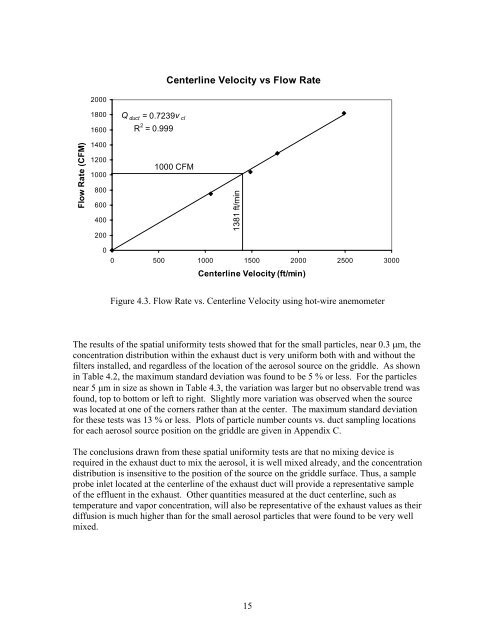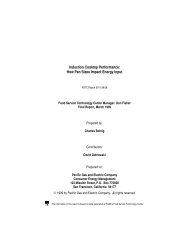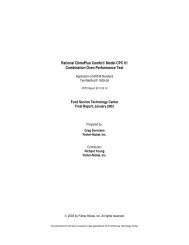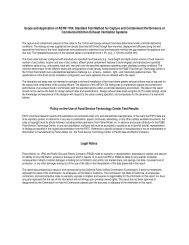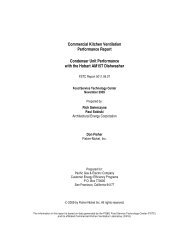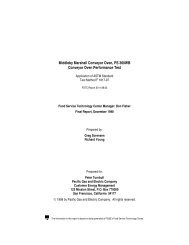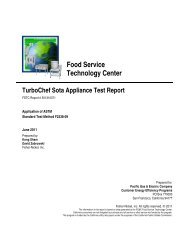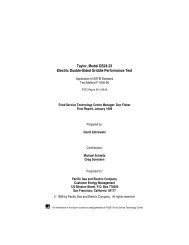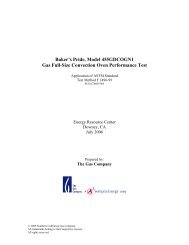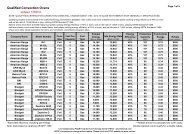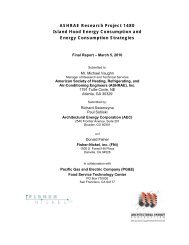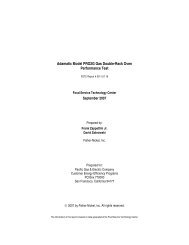Grease Filter Efficiency Test Method - Food Service Technology ...
Grease Filter Efficiency Test Method - Food Service Technology ...
Grease Filter Efficiency Test Method - Food Service Technology ...
Create successful ePaper yourself
Turn your PDF publications into a flip-book with our unique Google optimized e-Paper software.
Centerline Velocity vs Flow Rate<br />
2000<br />
1800<br />
Q duct = 0.7239v cl<br />
1600<br />
R 2 = 0.999<br />
Flow Rate (CFM)<br />
1400<br />
1200<br />
1000<br />
800<br />
600<br />
400<br />
200<br />
1000 CFM<br />
1381 ft/min<br />
0<br />
0 500 1000 1500 2000 2500 3000<br />
Centerline Velocity (ft/min)<br />
Figure 4.3. Flow Rate vs. Centerline Velocity using hot-wire anemometer<br />
The results of the spatial uniformity tests showed that for the small particles, near 0.3 µm, the<br />
concentration distribution within the exhaust duct is very uniform both with and without the<br />
filters installed, and regardless of the location of the aerosol source on the griddle. As shown<br />
in Table 4.2, the maximum standard deviation was found to be 5 % or less. For the particles<br />
near 5 µm in size as shown in Table 4.3, the variation was larger but no observable trend was<br />
found, top to bottom or left to right. Slightly more variation was observed when the source<br />
was located at one of the corners rather than at the center. The maximum standard deviation<br />
for these tests was 13 % or less. Plots of particle number counts vs. duct sampling locations<br />
for each aerosol source position on the griddle are given in Appendix C.<br />
The conclusions drawn from these spatial uniformity tests are that no mixing device is<br />
required in the exhaust duct to mix the aerosol, it is well mixed already, and the concentration<br />
distribution is insensitive to the position of the source on the griddle surface. Thus, a sample<br />
probe inlet located at the centerline of the exhaust duct will provide a representative sample<br />
of the effluent in the exhaust. Other quantities measured at the duct centerline, such as<br />
temperature and vapor concentration, will also be representative of the exhaust values as their<br />
diffusion is much higher than for the small aerosol particles that were found to be very well<br />
mixed.<br />
15


